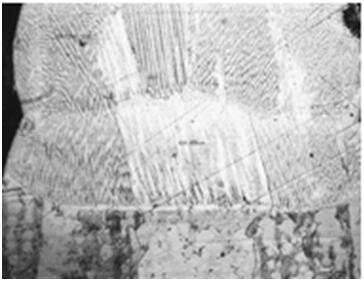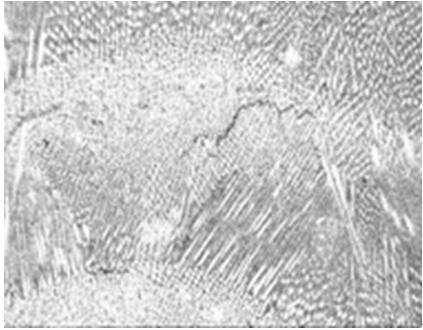Composite powder for high-strength and high-crack-resistance laser additive repair and preparation method thereof
A laser additive and composite powder technology, applied in the field of powder metallurgy, can solve problems such as difficulty in meeting high crack resistance requirements, cracking in the repair area, repair failure, etc., and achieve the effect of reducing impurity content, avoiding plasticity decline, and improving purity
- Summary
- Abstract
- Description
- Claims
- Application Information
AI Technical Summary
Problems solved by technology
Method used
Image
Examples
Embodiment 1
[0021] First, the spherical powder A powder was prepared by argon atomization method using the master alloy. The weight percentages of the chemical components in the A powder were: carbon was 0.07%, chromium was 22.0%, cobalt was 0.7%, molybdenum was 9.0%, and aluminum was 0.3%, titanium is 0.3%, nickel is the balance; powder particle size is 53-105μm;
[0022] Then use the master alloy to prepare spherical powder B powder by argon atomization method. The weight percentages of the chemical components in the B powder are: carbon is 0.12%, chromium is 6.8%, cobalt is 11.85%, boron is 0.015%, aluminum is 6.15% %, hafnium is 1.50%, tantalum is 6.35%, molybdenum is 1.5%, tungsten is 4.9%, rhenium is 2.8%, nickel is the balance; powder particle size is 53-105μm;
[0023] Finally, A powder and B powder were mechanically stirred and mixed at a weight ratio of 7%:93%, and the mixing time was 24h.
[0024] A certain type of aero-engine turbine blade tip cracks, a single high-strength p...
Embodiment 2
[0026] Spherical powder A powder is prepared by argon atomization method using master alloy. The weight percentage of each chemical component in A powder is: carbon is 0.05%, chromium is 20.0%, cobalt is 0.5%, molybdenum is 8.0%, aluminum is 0.2% , titanium is 0.2%, nickel is the balance; powder particle size is 53-105μm;
[0027] Then use master alloy to prepare spherical powder B powder by argon atomization method, the weight percentage of each chemical composition in B powder is: carbon is 0.10%, chromium is 6.6%, cobalt is 11.45%, boron is 0.01%, aluminum is 5.94% %, hafnium is 1.30%, tantalum is 6.2%, molybdenum is 1.3%, tungsten is 4.7%, rhenium is 2.6%, nickel is the balance; powder particle size is 53-105μm;
[0028] Finally, A powder and B powder were mechanically stirred and mixed at a weight ratio of 6%:94%, and the mixing time was 24h.
Embodiment 3
[0030] The master alloy is used to prepare A powder by argon atomization method. The weight percentage of each chemical component in A powder is: carbon is 0.1%, chromium is 23.0%, cobalt is 1.0%, molybdenum is 10.0%, and aluminum is 0.4%. , titanium is 0.4%, nickel is the balance; powder particle size is 53-105μm;
[0031] Then use the master alloy to prepare B powder by argon atomization method. The weight percentage of each chemical component in B powder is: carbon is 0.14%, chromium is 7.0%, cobalt is 12.05%, boron is 0.02%, aluminum is 6.30% %, hafnium is 1.70%, tantalum is 6.5%, molybdenum is 1.7%, tungsten is 5.1%, rhenium is 3.0%, nickel is the balance; powder particle size is 53-105μm;
[0032] Finally, A powder and B powder were mechanically stirred and mixed at a weight ratio of 8%:92%, and the mixing time was 24h.
PUM
| Property | Measurement | Unit |
|---|---|---|
| particle diameter | aaaaa | aaaaa |
Abstract
Description
Claims
Application Information
 Login to View More
Login to View More - R&D
- Intellectual Property
- Life Sciences
- Materials
- Tech Scout
- Unparalleled Data Quality
- Higher Quality Content
- 60% Fewer Hallucinations
Browse by: Latest US Patents, China's latest patents, Technical Efficacy Thesaurus, Application Domain, Technology Topic, Popular Technical Reports.
© 2025 PatSnap. All rights reserved.Legal|Privacy policy|Modern Slavery Act Transparency Statement|Sitemap|About US| Contact US: help@patsnap.com


